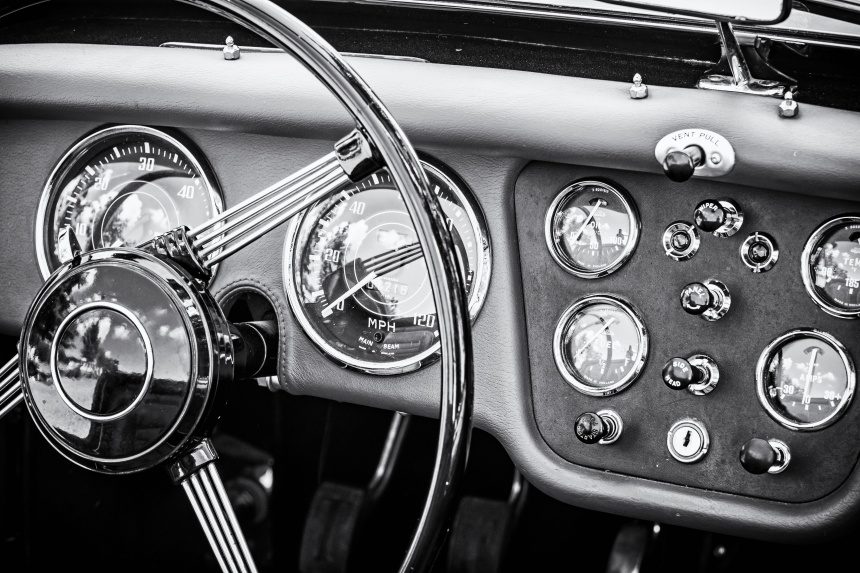Managing editor and logophile Andy Hollandbeck reveals the sometimes surprising roots of common English words and phrases. Remember: Etymology tells us where a word comes from, but not what it means today.
Today, horse-drawn carriages are the purview of romantic evenings out, over-the-top weddings, or the occasional pomp of royal arrivals and departures. But in the time before internal combustion engines, they were simply a workaday way to get around, and the problems of horse-drawn vehicles were everyday problems with everyday solutions.
For example, on unpaved routes, horses’ hooves could kick up a lot of mud and dirt that would hurtle back toward the carriage, especially when traveling at speed. Carriages would thus be outfitted with a board or leather apron at the front to prevent those flung clods from flying into the vehicle. In the early 1840s, we start to find written evidence of people referring to these barriers as dash-boards — because the mud and dirt would be dashed upon the board rather than against the driver’s or passengers’ faces.
Decades later, early automobile designs often took the general shape of a carriage as a starting point. Naturally, the structure that was called the dashboard in a carriage was, by 1904, also called a dashboard in a car. Those early automobile dashboards, however, were just as unadorned as the carriage versions — not so much as a gas gauge.
But as horseless carriages became more complex, dials and knobs and other instruments were needed or desired — things like speedometers, headlight controls, and at some point a gas gauge. The dashboard was the perfect place to attach these devices because they would be right there in front of and at the control of the driver.
Over time, the original mud-blocking sense of the word dashboard was, like the horse carriage trade, more or less left in the past, and the dashboard became all about the information and control the gadgets and gewgaws provided. Dashboard then took another leap, outside the realm of travel. Today, dashboard can refer to a digital array of regularly updated information relevant to a particular topic, group, or business. A digital dashboard, like the dashboard on a car, gives the user real-time information that can be acted upon as needed. An investor, for example, might use a dashboard to simultaneously keep an eye on the prices of specific stocks, stock indexes, international currencies, and trade volumes in order to time the best trades.
In fact, your reading this right now will show up in the dashboard the Post’s director of digital content uses to judge how successful our website is. In addition to recording that you visited this page, it will also note when you got here, how long you stay, how you got to this page, what operating system you’re using, and a whole mess of other information that will be aggregated with the same information from every other website visitor.
And, like a car’s dashboard (at least metaphorically), she’ll use the data from her digital dashboard to drive this website onward.
Featured image: Shutterstock
Become a Saturday Evening Post member and enjoy unlimited access. Subscribe now




Comments
i was just ogling the 1936/38 wolesley automobile used for police cars in england during the war. and here you are with your dashboard… thanks!!!
What a fascinating look at the word dashboard, how it evolved, and all the different meanings it has today. Too many, but whatever. One of the very first Oldsmobile’s (or cars period) was the Curved Dash Olds. There! Incorporated right into the very name.
The meaning of it as a dash-board in paragraph 2 I’d never heard of before. As a barrier to keeping mud from being flung into the driver and passenger’s faces (and clothing) by the horse drawn carriages. Very glad the term eventually got a badly needed upgrade!
No comments about automotive dashboards would be complete without a mention of the most beautiful one ever, in NONE other than the 1957 Oldsmobile. The wonderful oval-theme of the classic grill in front is continued with further exterior styling cues, and the interior of course. Rocket 88, Starfire 98? The choice is yours.